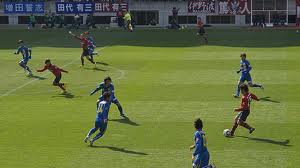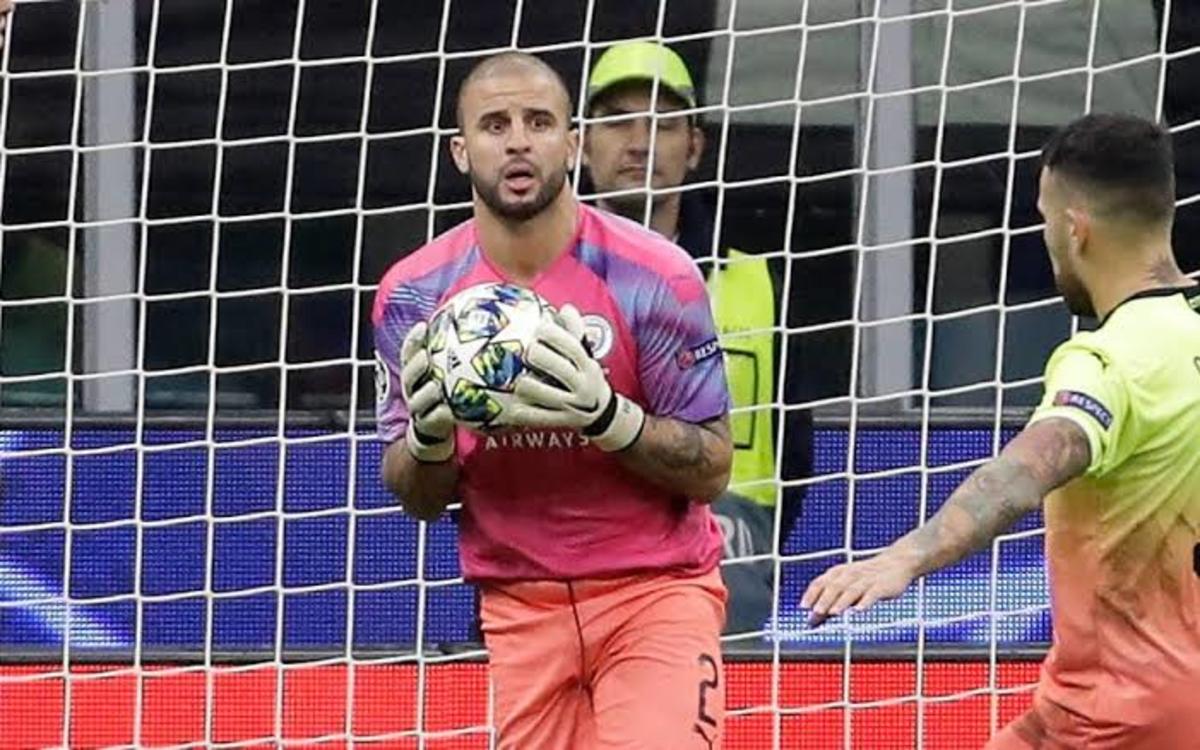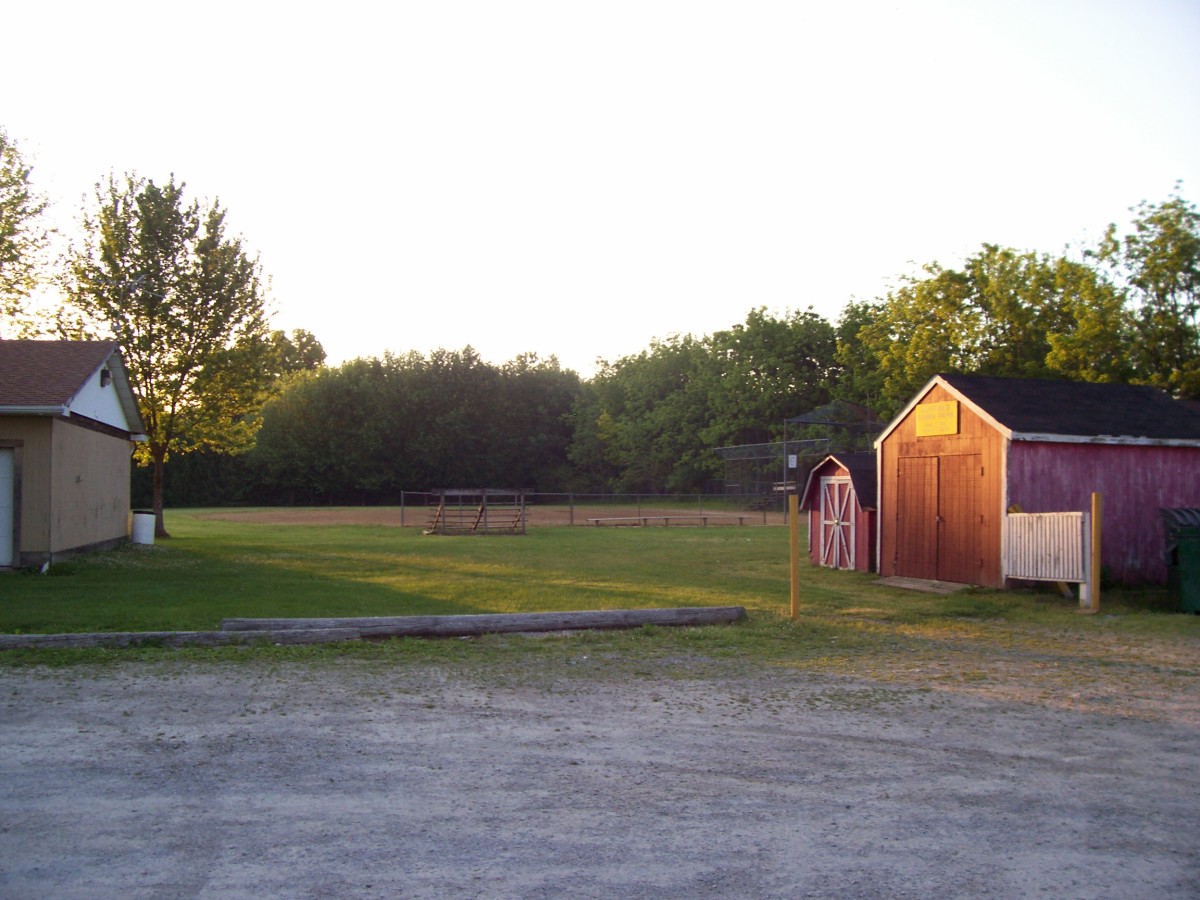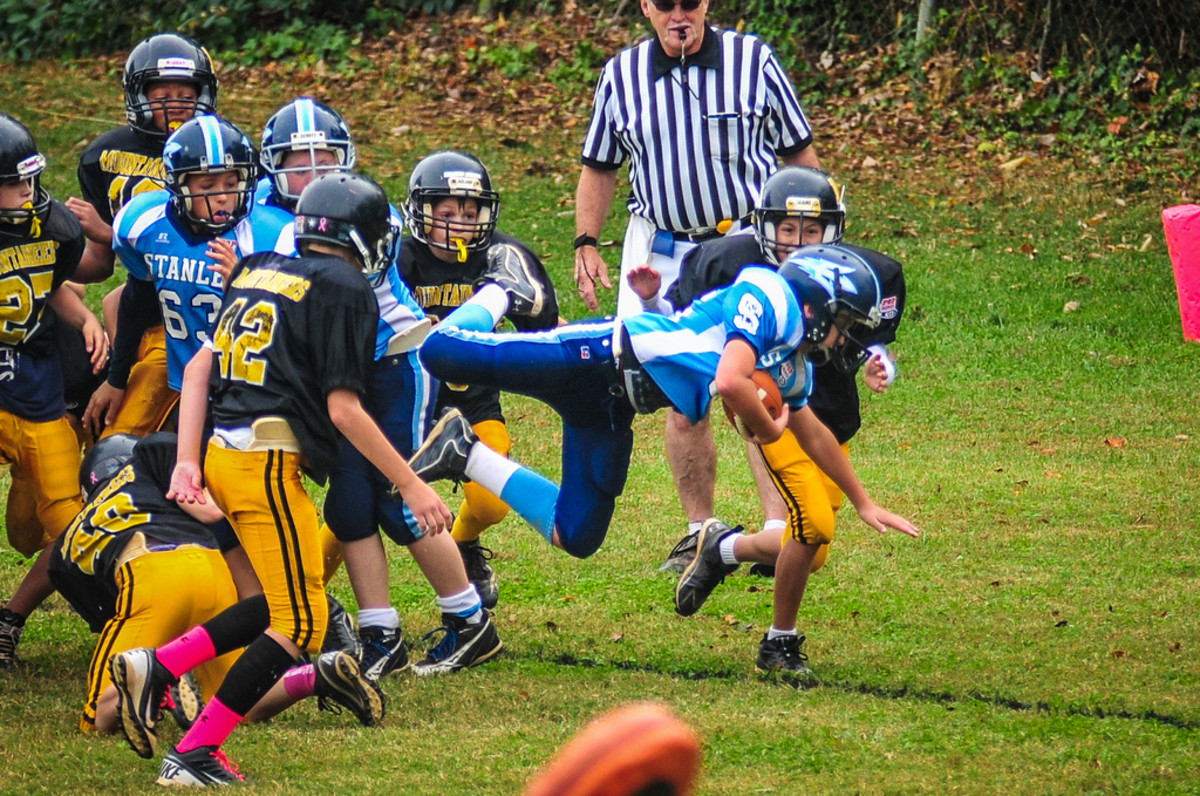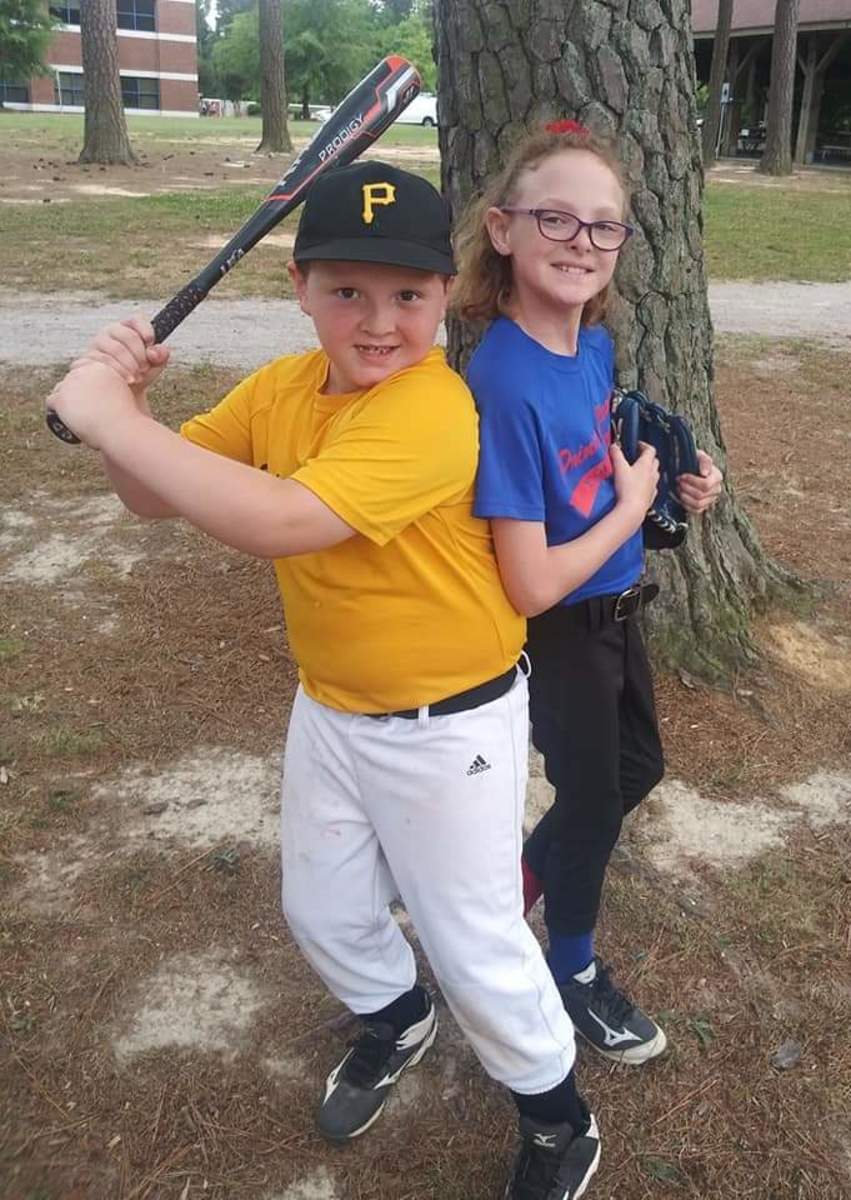How to Coach a Winner in AYSO, ages 8-12
move the ball forward into space
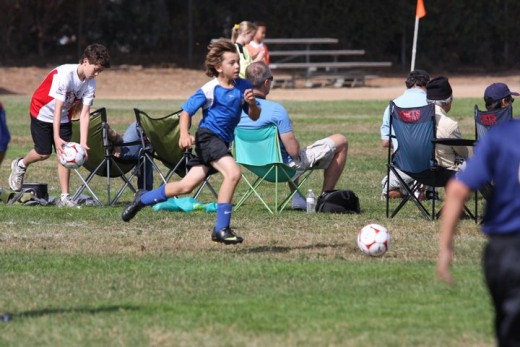
Tips for Success
AYSO soccer is low-key fun. The league provides an aerobic outlet for young athletes who want to get out and run but don't want to make the bigger commitment to a select soccer program. League directors balance the teams as evenly as they can based on prior player performance. The parents are generally more relaxed and laid-back and not so intensely focused on winning and the individual success of their own children. The final score is downplayed and efforts and adjustments are made to avoid lopsided blowouts that can dishearten an overmatched team. Coaches are discouraged from yelling too much direction from the sidelines to maintain a more peaceful ambience. All that said, here are some step-by-step tips on how to coach a winner.
Assess your "talent"
In AYSO there are no cuts and everyone plays. If you are coaching the ages of U8, U10, or U12, you were allotted a roster of 9-12 kids. Your league director used the data on player scoring history to give each team a couple scoring stars, or a number of kids who can score occasionally. At your first few practices you should be running 1 versus 1 and 2 v. 2 drills to determine your fastest and most skilled and motivated players. My experience has been that with a roster of 9-12 kids you usually get 3-4 relatively skilled players, 1 or 2 more who can "kind of" run, and the rest are daisy-sniffers and/or HTC's. HTC is an acronym for human traffic cone. These HTC's differ from real traffic cones in that they are not as cute, not as orange, and tend to talk back and tip themselves or each other over. Keep your practices moving along with activity stations to minimise your need to discipline your HTC's.
In your practices before your first game your priority is to identify your top 3 most-skilled players, discover a few goalies who are not afraid of a hard shot, and get (most) everyone comfortable making legal and sound goal-kicks and throw-ins. Also, don't forget to note if you have a few skilled, left-footed, or ambidextrous players.
Formation and Lineup
Generally, you want to align your most skilled players down the middle seam of the field.
for 7 on 7:
Your first game is looming and you need to determine a field formation and then fill it in with your lineup. If you are playing 7 versus 7 (7-a-side), keep it simple with 4 forwards, 2 defensemen, and 1 goalie. That is a 1-2-4. Opposing teams may run a 1-3-3 against you. Yes, the 1-3-3 formation does sound more balanced, but with 3 forwards, you only get 1 middle striker. Also, in the 1-3-3, you only have 1 central defender, versus 2 middle defenders in the 1-2-4. Since teams almost never have the ability at this level to stretch the field by crossing from the far forward corners, it is unnecessary to have a backline of 3 on defense. Your 2 defenders are responsible for covering and stopping strikers coming straight in on goal and only about 10 meters to the left and right of the net. They should stay close to home and not range up much past midfield when your offense is threatening in the opposition's end.
Perhaps, the best part of playing 4 forwards with a 1-2-4 formation is that you have 2 strikers going for goal. If you have an aggressive left-footed player, put them at Left Striker. Of your remaining players, put your best offensive, right footed player at Right Striker. Take your next best player (who is hopefully defensive-minded), and put them at Left Defense. They should be on the left to defend against the opposition's primary striker who will most often be right footed. For goalie, you do not need to use one of your skilled runners, just anyone who is brave when facing hard shots and has enough coordination to punt the ball effectively out of their box. Resist the tempation to put one of your best players in goal, their skill and mobility is often wasted there. Your team will face far fewer shots if you have a solid, skilled defenseman on the fullback line and not tending goal. Finally, you have to fill the positions of left and right wing and right defender. Put your next best player at right defense and then you may "hide" your lesser skilled players at the wing positions. If your team attains a comfortable lead or plays an inferior opponent then use it as an opportunity to rotate your weaker players into the striker positions.
Formation and Lineup
for 9 on 9:
The most common approach is a formation of 1-2-3-3, with 1 center striker, but, similar to my recommended 7 on 7 formation, I suggest you go with 4 forwards. So you should have 4 forwards, 2 midfielders, 2 defensemen, plus 1 goalie. Good players can be wasted on the periphery so you don't need to have 3 on the midline, or backline. Now for setting your lineup for this formation. Put aggressive players with good shooting ability at the striker positions and preferably, a left-footer at left striker, and a "rightie" at right striker. Put your next best player at left defense to stop the opposing teams right footed striker. As quickly as possible, determine who is the major scoring threat on the opposition and assign your best defenseman to cover this player closely when they are threatening. Finally, use one more active player at midfield, and any player who is not afraid of the ball in goal who (hopefully) can punt the ball too. Fill in the remaining positions of wing-forwards and the other midfielder with your "remaining", less-talented players.
Substitutions and Bench Management (a.k.a - Who sits when?)
Most coaches agree that players should get an equal amount of playing time and be allowed to play every position they desire. It's best to subscribe to this policy. I tell the parents and players at the first team meeting that everyone will get a chance at every position with the exception of goalie. I explain that I will not put a kid with glasses at goalie and I will not force an unwilling player to play goal. Otherwise, I attempt to divide the total quarters of playing time evenly among the kids. As referred to earlier, let me assume that you have about 4-5 good players. Each (top player) should sit out one quarter and try to avoid having more than 1 of them on the bench at the same time. If you need to sit 2 of them at once, I suggest sitting them in the 3rd quarter. It is best to start and finish the game strong.
How to avoid a blowout
Blowouts in AYSO are bad for many reasons. Most obvious is that you demoralize the opposing team and risk alienating their players, coaches, and parents. Blowouts can also be bad for your own child's future team success. Assuming your child is one of your best scorers, remember that the more goals he/she scores this year, the more likely he/she will be placed with non-scorers or low-scorers next season. This problem can be exaggerated if your co-coach or assistant coach's kid is also a talented scorer. If both of the coaches' kids rack up many goals, they will get placed on very weak teams the following year. The message here is that, while you want to win, try to win with class and without blowing out the other team. Here are some ways to avoid blowouts, or mitigate them once they start:
- Move your best scorers to fullback or goalie.
- Tell them they can only shoot with their off-foot.
- Tell them they can no longer shoot on goal.
- If they defy you and continue to make runs and score, you can sit them down and play short-handed.
Simple Ways to take Advantage
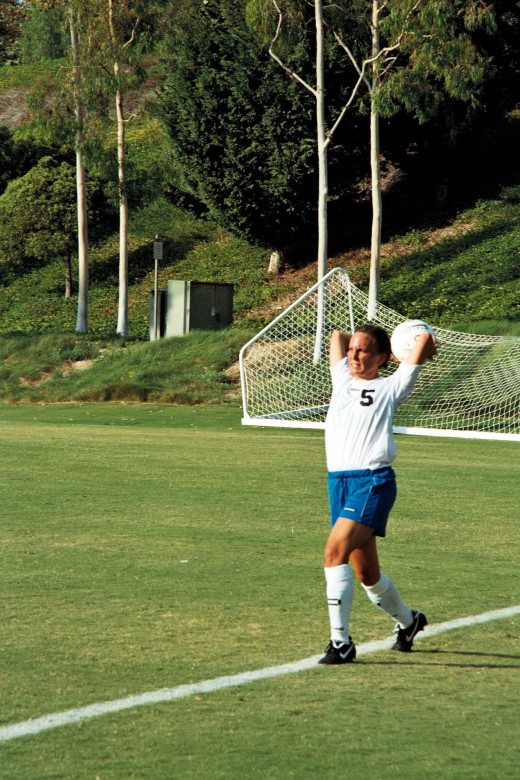
Throw-ins
Throw-ins present a great opportunity to both dramatically improve your field position and/or create a scoring chance. Practice throw-ins a lot early in your season and determine which players have the strength and coordination to really arch back and fire the ball from the sideline. Remember that a player must not twist when releasing the ball and both feet must be planted, or a trailing foot may be dragged. Here are the very simple guidelines for throw-ins. When re-starting in your own half, throw the ball in high and hard straight down the line to improve field position. When throwing in on your oppenent's end of the field, move your strikers and midfielders up into the goalie box and then instruct your player to throw the ball high and hard directly on goal. Never worry about offsides. There is no offsides on a throw-in. Like an indirect kick, the ball need only hit any other player, from your team or the opposition, before going into the goal. When throwing down the line go ahead and direct one of your forwards to receive it even in an off-sides position since the offsides rule is not in effect.
Goal Kicks - making and defending
Making
Practice free kicks and goal kicks frequently in practice and try to determine which players can consistently drive the ball with height and distance, with height being the most important. Aslo, instruct you players to never pass the ball through or across the front or "mouth" of the goal where it could be intercepted. At the pro level the entire formation usually shifts forward and the goalie takes the goal kick. Do not do this at the AYSO level. Instead, use your strongest footed defender or even midfielder to take the kick and keep the goalkeeper back near his/her line to defend against a stolen kick.
Defending Against (goal kicks)
Counter-attacking on a poorly made goal kick is perhaps the quickest and easiest way to score in AYSO soccer. As the opponent is setting up for their goal kick at the corner of their goalie box, line up all of your forwards spaced evenly across and right on the edge of the penalty box line. Set a similar wall of midfielders about 10 yards behind these forwards. Steal any low, slow, or poorly made goal kick and immediately shoot it back on the frame of the goal. One season my teams averaged just over a goal a game scoring in this fashion. Your offense may also capitalize on a poorly made punt, roll, or throw by the opposing goalkeeper by leaving a striker forward just about 10 feet off the goalie. If the goalie flubs the punt, roll or throw, steal the ball immediately and dribble/shoot it into goal.
Defending Against "Great Players"
The reality about the nature of many AYSO games is that there are about 4-7 active players passing, driving and making runs and shots on goal. The balance of the players are passive, timid, slower, and less inclined to "make plays". When your team is on defense, be quick to identify the "best" offensive players. Those players will inflict 95% or more of the damage with respect to time of posession and scoring. Take your top 1 or 2 players from your midfield line or backline and assign them "man-to-man" blanket coverage on the opposing threat(s). This strategy can help neutralize their effectiveness and really frustrate them. In football this is called assigning a "spy" to cover one specific player. Use this term when awarding "spy" coverage for your best defenders and encourage them to compete for the role.
Getting the Most of of Your own "Great" Players
In the early years of AYSO, top players can usually slice and dice their way down through the opposing formation and release a clean shot. As the kids get a bit older, it becomes harder and more rare for strikers and playmakers to make near full-field runs successfully. Set your strikers forward near the oppositions' last defenders and service them with through passes or passes as they run into space starting onside. Your strikers can make more frequent runs and shots if they are receiving passes in the open and not always having to create their own space.
